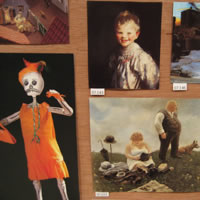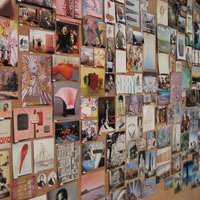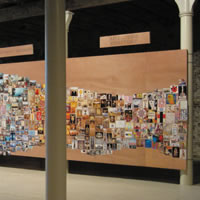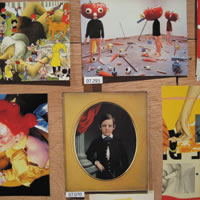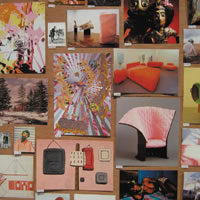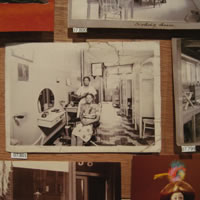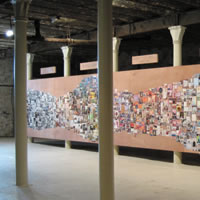
Main Space
Museo de reproducciones fotograficas (April 12 - June 3, 2007); exhibition traveled to the Rutgers University Gallery
Triple Candie is pleased to present "Museo de Reproducciones Fotograficas," selections from the gallery's recently acquired permanent collection. Encyclopedic in nature, the collection covers a wide range of material, from folk art, traditional African sculpture, Chinese painting, and American and European decorative arts, to photography, contemporary video and performance, graphic art, architecture, and film. More than 1,200 reproductions from the collection are on view, individually tagged with accession numbers that correspond to the available seventy-page inventory.
The reproductions are installed in a densely packed, sinuous cluster, measuring 50 feet long and 8 feet high. Seen from a distance, the hanging -- which gives primary consideration to aesthetic criteria -- imparts visual formon typological chaos. Museum-like signage overhead appears to delineate various sections -- "arte pop," "manierismo," etc. Up close, however, the installation evokes the raucous discordant melee of a museum storage rack, and it becomes clear that the signage has little-to-no connection with the works on view. One's sense of history atomizes and dissolves, and one is faced with the overwhelming shapelessness of an historical sublime, tempered only by the intimate scale, familiarity, and fine detail of many of the copies.
The "Museo de Reproducciones Fotograficas" is inspired, in part, by the great copy and reproduction museums of the late 19th century, among them the Pushkin Museum of Fine Arts in Moscow, the short-lived Musee de Copies in Paris, and the National Museo de Reproducciones Artisticas in Madrid. These museums, which were established to promote access to the great works of Western culture, consisted primarily of plaster reproductions of Greek, Roman, and Renaissance sculpture, hand-painted copies of Old Master paintings, and limited edition prints. In the 20th century, technological advances in color printing and other factors led to their demise, giving birth to what Andre Malraux called the "museum without walls," the next logical progression in the widespread democraticization of art. This exhibition returns the copy to the museum, locating it in the specific social-political context of Harlem.

